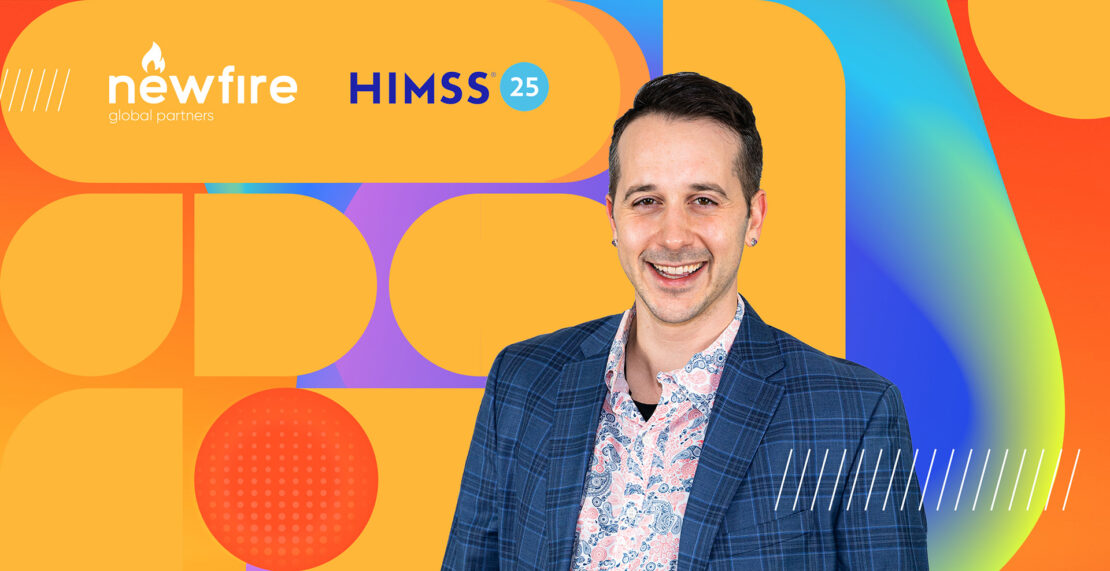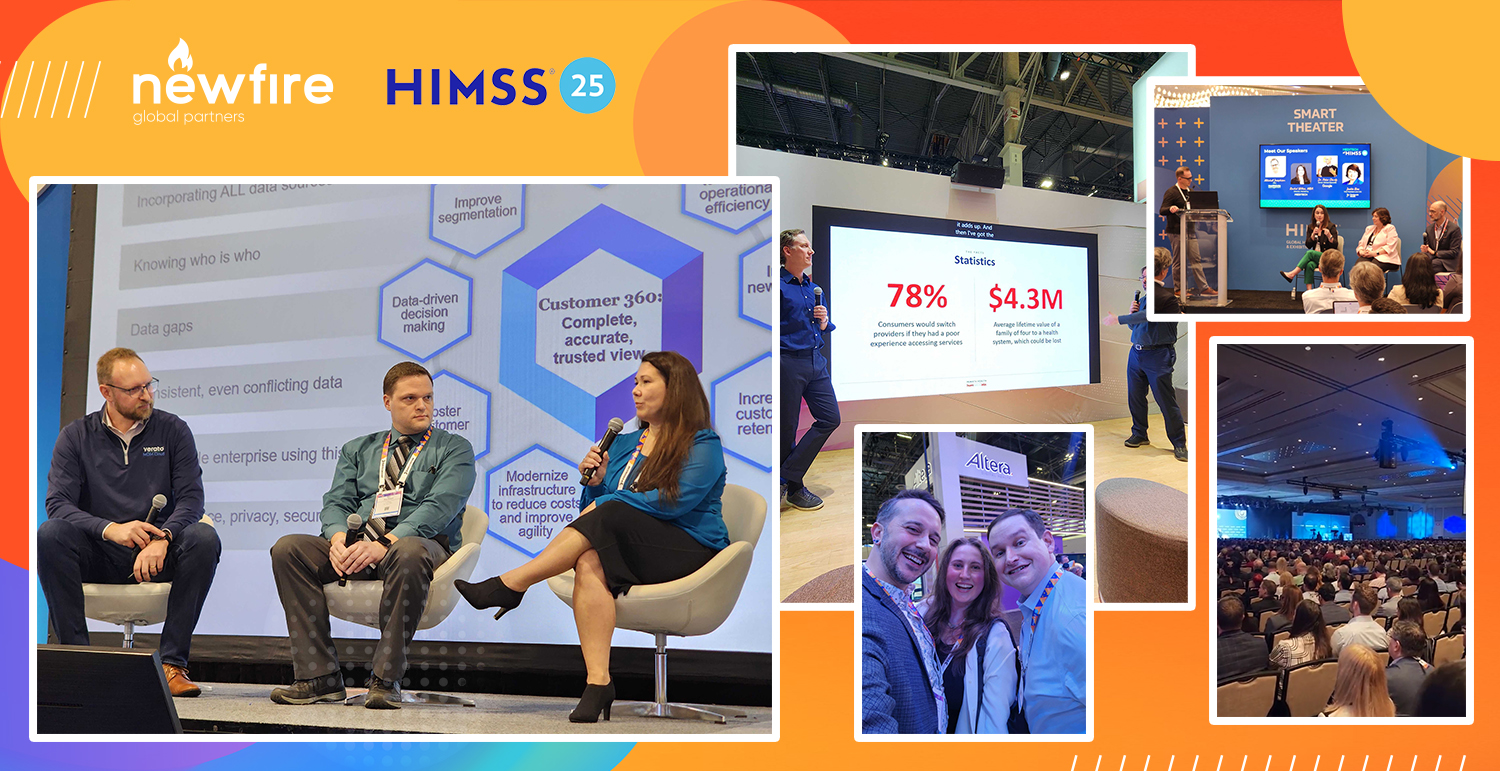HIMSS 2025 Debrief: John Moore III on Agentic AI, Smart Transformations & Key Trends

HIMSS 2025 showcased major healthcare trends, from Agentic AI and interoperability challenges to the rise of smart hospitals. AI remains a focus, but most of the conversations are now about governance and real-world impact. Meanwhile, economic uncertainty continues to influence (stymie) investment activity; however, care organizations are regaining financial stability, so expect to see renewed economic activity from those stakeholders.
Several sessions highlighted the progress of “smart hospitals” and enabling technologies, such as in-room cameras, smart displays, command centers, and radar-based biometrics monitoring. Prior authorization also remains a hot topic, particularly for its impact on patient experience and outcomes.
Following the event, we caught up with Newfire’s John Moore III, Principal Advisor in Newfire’s Healthcare Advisory Services group, to capture his key takeaways from the event.
Q: What were the dominant themes at this year’s HIMSS?
John Moore III: Interoperability was still a major topic, as it has been for years. The big question remains: how do we standardize data sharing across different systems? There’s ongoing debate over whether open API standards like FHIR will be the ultimate solution, but no clear consensus yet. This approach continues to be the dominant strategy for most organizations, but FHIR APIs still aren’t comprehensive enough to enable all data use cases, so the debate continues.
Every year, there’s a new buzzword that emerges as a consistent theme across many vendors’ marketing language, and this year’s notable buzzword was definitely Agentic AI. AI has been a focus in healthcare since ChatGPT-3 launched in 2022, but this year, discussions moved beyond generic AI hype to focus on how AI-driven agents can function autonomously within healthcare workflows to alleviate administrative burdens. This is a significant shift in how vendors and buyers are thinking about their AI strategies, but it also highlights ongoing concerns about data quality for AI use cases and, maybe more importantly, governance of these new tools.
Q: How did this year’s event compare to previous HIMSS conferences?
JM: The energy felt a bit flatter than in past years. Part of that was logistical—attendees were spread across too many sessions and exhibit spaces, which I felt diluted the experience. But beyond that, there’s a larger economic backdrop affecting health tech. Investor confidence is still shaky after years of unrealistic hype that didn’t fully materialize, and while hospital financials are stabilizing post-pandemic, many organizations remain cautious about new technology investments.
That said, the industry isn’t standing still. There were some fascinating discussions on smart hospital transformation—not just about new gadgets, but about rethinking healthcare infrastructure to fully integrate technology into care delivery.
I saw some great presentations from Memorial Hermann, Mayo, and others during the Smart Transformation pre-conference forum, where speakers shared their successes, struggles, and best practices for enacting these new models of care. This was my first time attending a pre-conference forum, and the sessions were of a more consistent quality than I’m accustomed to from the general programming.

Q: Any standout innovations or demos that caught your attention?
JM: One of the most exciting technologies I heard about was a radar-based patient monitoring system. This tool allows hospitals to track vitals like heart rate, blood pressure, and temperature without attaching any sensors to the patient. What’s even more impressive is that it can predict conditions like UTIs and sepsis 3-5 days before symptoms appear, enabling early intervention.
Another standout demo came from Humata AI, showcasing how AI can streamline prior authorization workflows. Their system helps healthcare providers identify bottlenecks in approvals, reducing administrative burden and improving reimbursement efficiency. Their presentation featured the CFO of one of their clients, who came across as almost giddy with the results their organization has achieved using Humata.
Q: What’s a key takeaway that would be interesting to someone outside of healthcare?
JM: One of the biggest frustrations in the US healthcare system is the amount of repetitive paperwork—especially patient consent forms. At HIMSS, there was a lot of discussion about creating a single, persistent digital consent that could follow a patient across different providers and health systems. It’s not the flashiest innovation, but it would significantly improve the patient experience in just about every care encounter and ease the amount of work expected from frontline admin staff.
Q: How will these insights impact your work at Newfire?
JM: Agentic AI is something we’ll need to dive deeper into—understanding where these AI-driven agents can truly add value versus where they risk creating unnecessary complexity. We’ve seen the overuse of dashboards in EHRs, and those same issues could arise with AI agents if the right governance structures aren’t in place to ensure they are managed properly.
Another area to watch is no-code / low-code development. It’s a growing trend that allows non-technical users to create automated workflows, reducing the reliance on traditional software development. Many executives I met with have been looking into available tools to assist with code writing, and their level of comfort with this approach as a complement to their human development resources continues to grow.
For Newfire, this presents both challenges and opportunities as we assess how we can best help our clients leverage these tools effectively without sacrificing control or security.
Q: Any final thoughts on the future of healthcare technology?
JM: The economic uncertainty is still a factor, but healthcare organizations are regaining financial stability. As they begin to ramp up strategic investments in new tech, we’ll see a new wave of mid-sized, best-of-breed solutions gaining traction. The challenge will be integrating these solutions seamlessly into existing workflows, which, at the end of the day, just means there are going to be new exit opportunities emerging for savvy investors as these innovations prove their value for end users.
We’re at a tipping point where technology can finally move beyond just digitizing existing processes and start fundamentally transforming how care is delivered. I’m excited to be part of the Newfire Advisory team during this time, as we are well-positioned to help clients navigate these changes, working closely with them to ensure they adopt solutions that will truly drive better outcomes.
Bridging Innovation and Implementation in Healthcare
HIMSS 2025 made it clear: The future of healthcare depends on smart technology, seamless interoperability, and AI-driven innovation. Organizations that act now will lead the way in improving patient experience and outcomes, as well as operational efficiency, giving them a competitive advantage in their regional markets.
Newfire partners with healthcare and tech companies to build AI-powered, scalable solutions that drive real impact. Let’s turn your vision into reality—connect with us to accelerate your next healthcare innovation.